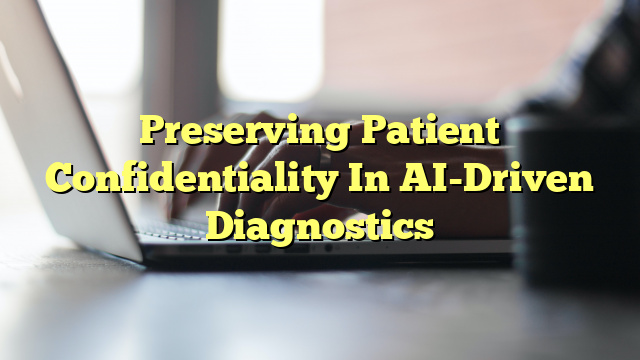Table of Contents
Privacy Preserving Techniques in AI
AI-driven diagnostics have the potential to revolutionize healthcare, but they also raise concerns about patient privacy and confidentiality. To address these concerns, privacy preserving techniques are employed in AI systems.
Some common privacy preserving techniques include:
- Differential Privacy: This technique adds noise to the data to prevent the identification of individual patients.
- Federated Learning: In this approach, AI models are trained locally on individual devices, and only aggregated information is shared, ensuring that patient data remains on the device.
- Homomorphic Encryption: This technique allows computations to be performed on encrypted data without decrypting it, preserving patient privacy.
Maintaining Confidentiality in Telehealth
Telehealth has become increasingly popular, especially during the COVID-19 pandemic. While it offers convenience and accessibility, maintaining patient confidentiality is crucial.
To ensure confidentiality in telehealth, healthcare providers can:
- Use secure communication platforms that encrypt patient data.
- Implement strong authentication measures to verify the identity of patients and healthcare professionals.
- Train healthcare professionals on privacy and confidentiality best practices.
- Regularly update and patch telehealth systems to address any security vulnerabilities.
AI’s Threat to Privacy and Confidentiality
While AI-driven diagnostics offer numerous benefits, they also pose a potential threat to privacy and confidentiality. The vast amount of data collected and analyzed by AI systems can be exploited if not properly protected.
Issues such as informed consent and patient autonomy can also be compromised when AI systems make decisions without the patient’s understanding or involvement.
It is crucial for healthcare organizations and policymakers to establish robust privacy and confidentiality frameworks to mitigate these risks and protect patient rights.
Ethical Issues of AI in Medical Diagnosis
The use of AI in medical diagnosis raises several ethical issues, including:
- Transparency: AI systems often operate as black boxes, making it difficult to understand how they arrive at their decisions. This lack of transparency can raise concerns about accountability and trust.
- Equity: AI systems may introduce biases if trained on biased data, leading to disparities in healthcare outcomes for different populations.
- Human Oversight: While AI can assist in diagnosis, it should not replace human judgment entirely. Ensuring appropriate human oversight is essential to maintain patient safety and prevent errors.
Addressing these ethical issues requires ongoing dialogue and collaboration between healthcare professionals, AI developers, and policymakers.

